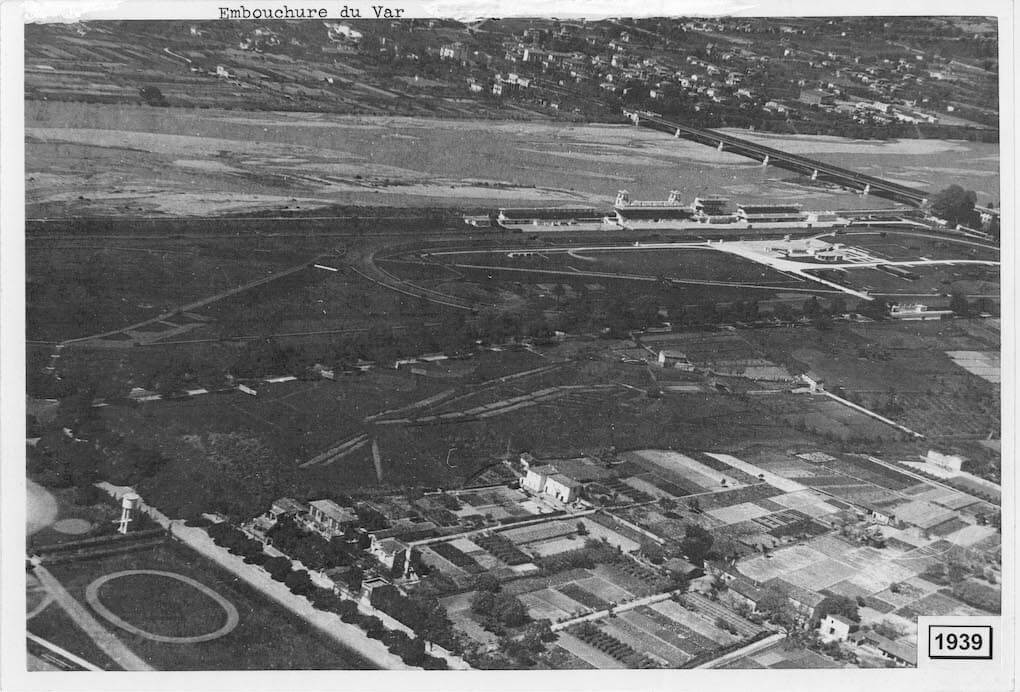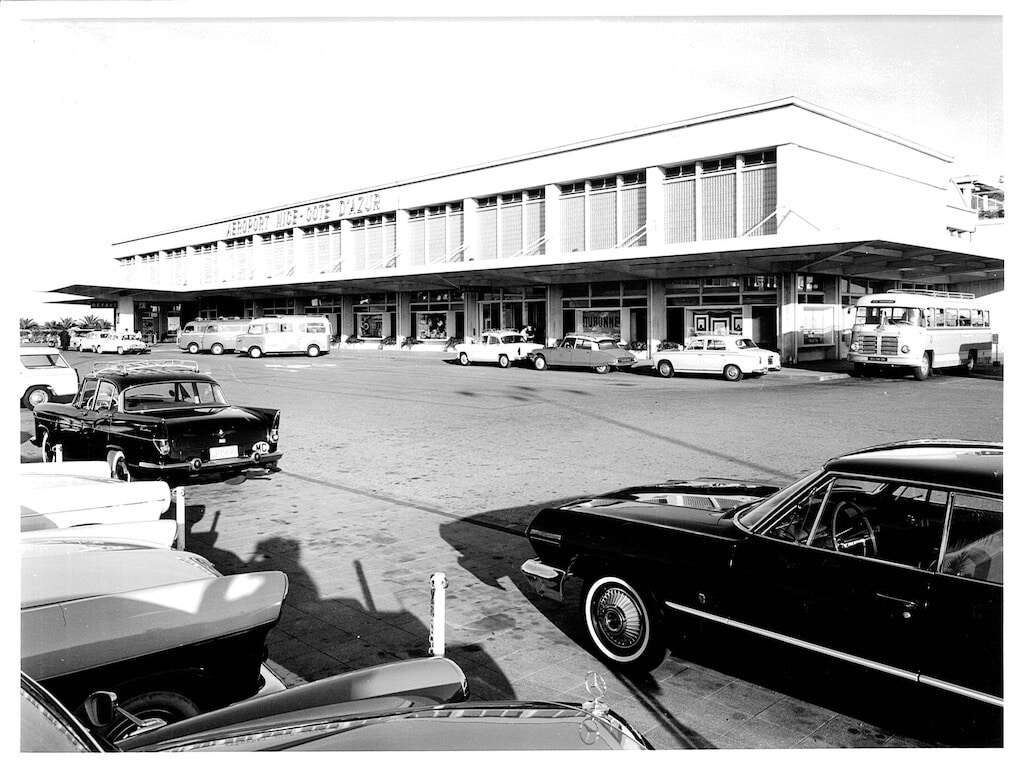PHOTOS. Nice Côte d’Azur Airport: over 100 years of history

Here are a few milestones from the major developments at Nice airport, from the 1900s right up to the terminal 2 extension project planned for 2026.
The second largest airport in France, Nice Côte d’Azur airport is built in part on the sea. It is a configuration that makes for particularly impressive landings, and gives travellers a spectacular view of the Riviera coastline. But it is worth bearing in mind that while these days it handles up to 14.5 million passengers (in 2019 before the health crisis), this key location on the Côte d’Azur was just a grassy stretch of beach in 1901.
The area, despite being less than ideally suited, served as a playground for Captain Ferdinand Ferber for several years. The 39-year-old soldier, who lived in Nice, would carry out strange tests with the different gliders he had invented, on a 700-metre-long grass runway. The aviation pioneer lost his life in 1909 during a demonstration in Boulogne-sur-Mer, but his genius left its mark in Nice. As early as 1910, the city organised its first aviation meeting, with the greatest flyers of the time. An event attended by 100,000 people.
In the 1920s, the people of Nice, who knew the area as the “terrain de la Californie” (California Field), renamed it the “champs d’aviation de la Californie” (California Airfield). As the airmail network grew, along with plans for flights to the French colonies, the local and departmental authorities decided to develop an “air relay base”. Several companies such as C.A.F (Compagnie Aérienne Française) flew to Nice, but there was no regular service.
1944: construction of a concrete runway
Between 1930 and 1939, discussions were underway to develop an airport. At that time, the city advocated relocating the racetrack, which was next door. But things really ‘took off’ at the end of the Second World War, particularly in 1944, when the Americans created the first concrete runway and the first control tower for use by their bombers.

The town’s airport project in 1935

The racecourse in 1939
© Aéroports de la Côte d’Azur
At the end of the war, life got back to normal and so did travel, with the first Air France Paris-Nice flight taking place in June 1945. A journey that at the time took more than 5 hours! The length of the runway was increased to 1,700 metres, and other airlines such as KLM, Britain’s BOAC and Swissair began to stop over at Nice. In 1955, the airfield, which was called “Nice-le-Var”, took on its current name, “Aéroport Nice Côte d’Azur”. Inaugurated with great ceremony, the modern facility’s runway was extended to 2,200 metres long and 60 metres wide.


The airport seen from the runway and from the town side in 1956 © Aéroports de la Côte d’Azur
The runway continued to grow and in 1961 it measured 2,685 metres thanks to 5 hectares reclaimed from the sea to the east, enabling it to welcome its first Boeing 707. In 1964, the number of people travelling through Nice airport passed the one million mark. Ten years later, the runway was extended to 3,000 metres and could accommodate longer-haul aircraft, resulting in the first direct Nice-New York flight.
A second runway to the south
The airport went on to quite simply double its surface area thanks to a colossal construction project that began in 1975. 200 hectares were reclaimed from the sea thanks to millions of cubic metres of rubble sourced from the hill at Crémat. The airport’s surface area was now 380 hectares, which allowed for the creation of a second runway to the south, measuring 3,200 metres.

1975 – Plan of the South extension and the town’s port

The South extension in 1978 (the dyke that would collapse in 1979 does not yet appear in this view)
But the construction site was to be struck by tragedy. On 16 October 1979, the dike to the south of the extension, which was to house the new marina, collapsed as a result of a landslide. Several people lost their lives in the disaster.
Work has been ongoing ever since. After the inauguration of Terminal 2 in 1987, Terminal 1 underwent many changes between 1990 and 1992, and a new Terminal 2 was inaugurated in 2002. In 2026, Terminal 2 will undergo a third major transformation. Contested by many citizens and environmental associations, this 25,000 m2 extension aims to offer travellers “the best passenger experience and safety conditions”. It will allow for an additional 3 million passengers.
In its defence, the airport points out that it has reduced its direct emissions by more than 85% and achieved carbon neutrality in 2016 with the award of the Airport Carbon Accreditation level 3 label. In addition, it promises to sustainably reduce its energy consumption, in line with the French government’s recommendations for this winter.









